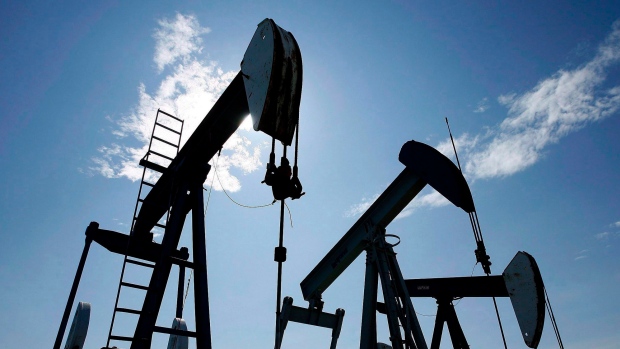Dec 6, 2017
Oil falls as rise in U.S. fuel stocks suggests easing demand
, Reuters

U.S. crude on Wednesday slid nearly 3 per cent on Wednesday, its biggest daily decline in more than two months, after a sharp rise in U.S. inventories of refined fuel suggested demand may be flagging, while U.S. crude production hit another weekly record.
U.S. gasoline stocks rose by 6.8 million barrels and distillate inventories were up 1.7 million barrels, government data showed, both exceeding expectations in a Reuters poll. The surprise data hit prices of both crude and products in a market that was tilted bullish and vulnerable to a selloff, analysts said.
The Energy Information Administration data also showed U.S. crude stocks fell 5.6 million barrels, more than expected. That was partially due to closure of the Keystone pipeline after a leak in South Dakota in mid-November, which cut flows to Cushing, Oklahoma. That line reopened Tuesday.
U.S. West Texas Intermediate crude futures settled down US$1.66, or 2.9 per cent, to US$55.96 a barrel. It marks the lowest close for the benchmark since Nov. 16 and the biggest one-day decline for WTI since Oct. 6.
Brent crude futures ended down 2.6 per cent, or US$1.64 a barrel to US$61.22, for its lowest close since Nov. 2.
Gasoline stocks tend to build in December, but at 221 million barrels of inventory, stocks are slightly above the five-year average for this time of year.
"Gasoline inventories are also now building as demand eases back even in the face of decent export numbers. Gasoline futures have clearly broken technical support levels and ULSD (diesel) futures are testing them," said David Thompson, executive vice-president at Powerhouse, an energy-specialized commodities broker in Washington.
Gasoline futures led the energy complex lower on Wednesday, as RBOB dropped 3 per cent to US$1.6658 a gallon. Heating oil, a proxy for diesel, lost 2.6 per cent to US$1.8650 a gallon.
U.S. crude production rose to 9.7 million barrels per day, another weekly record, though short of all-time records reached in the 1970s. That increase may undermine efforts by the Organization of the Petroleum Exporting Countries, Russia and other producers to cut supply. Those cuts, which were extended at a meeting last week for the whole of 2018, have helped lift Brent prices more than 40 per cent since June.
Prices have slipped from November's peak, which represented two-year highs.
"The sentiment-driven support to crude oil prices has somewhat dissipated as market participants look beyond last week's OPEC meeting," said Abhishek Kumar, senior energy analyst at Interfax EnergyRs Global Gas Analytics in London.
Russian Oil Minister Alexander Novak said it was too early to talk about exiting the OPEC agreement, and that the process would be gradual. Analysts such as Goldman Sachs have said that the expected rise in demand in 2018 would mostly be offset by U.S. and Canadian supply growth.
U.S. oil production has climbed by 15 per cent since mid-2016 to 9.7 million bpd, close to levels of top producers Russia and Saudi Arabia.
"With U.S. production, we're still in the throes of seeing that go ever higher. There's only going to be more production coming which is very problematic for OPEC non-OPEC deal adherence," said John Kilduff, partner at Again Capital in New York.


